Grey Cat Breeds: A Look At Popular Grey Cats – Litter-Robot
do you like gray cats? so are we, after all, they are soft, elegant and amazing. in the feline world, “gray” and “blue” are often interchangeable. you’ll find grey/blue coloration in almost any breed, but today we’re highlighting some of the more well-known gray cat breeds!
Russian blue
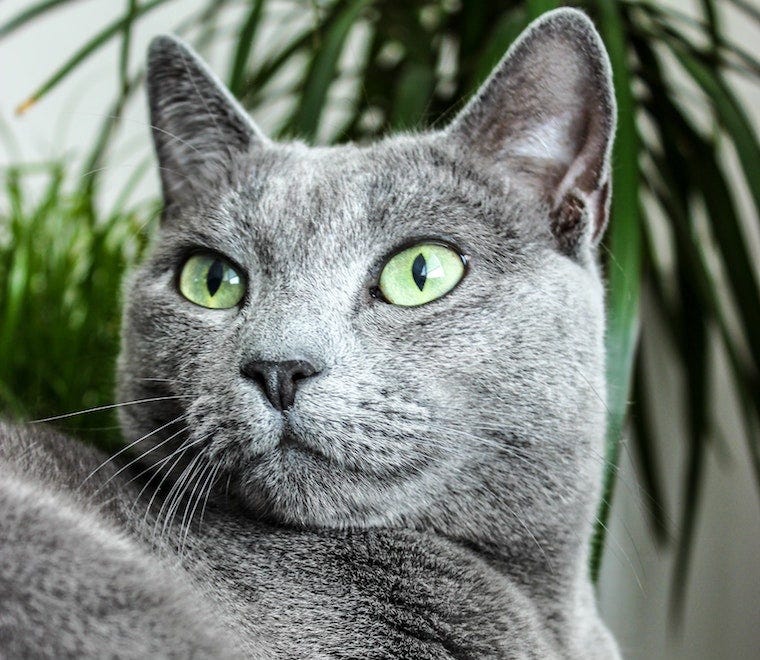
The Russian Blue cat is long, lean, and muscular. They sport a blue-gray double coat that is plush and silky to the touch, making them appear slightly larger than they are. like kittens, their eyes are yellow; with age, they turn bright green.
This cat is playful but reserved, often adapting to one person and resistant to strangers and new surroundings. they are very picky about hygiene and having a clean litter box. in fact, they may not even go in the litter box if it’s dirty. (This is where a self-cleaning litter box comes in handy!) The Russian Blue is known for its love of food and can face obesity if allowed to eat as much as it wants.
Russian blue is believed to have originated in Russia; in fact, the breed’s thick, warm coat suggests they were long used to surviving in a cold climate. according to some legends, the Russian blue was once targeted by hunters, who compared its lush fur to that of seals.
short
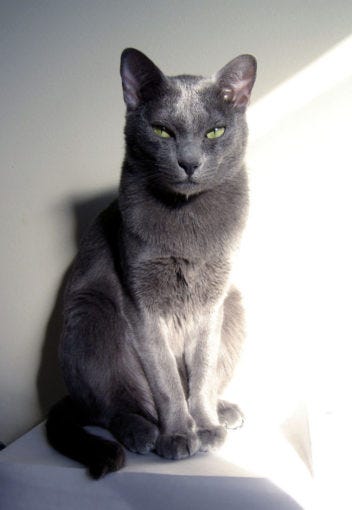
The Korat is one of the oldest and naturally purest breeds found today. they have blue-gray fur tipped with silver, giving them a phosphor-like sheen. her eyes start out blue, gradually changing to amber and finally bright green. they are small to medium in size, but also muscular.
The korat is a social cat that seeks attention. they love to cuddle, play and bond with their family. They generally get along well with other animals, but may become jealous if another pet gets too much attention.
These cats originated in Thailand, making their first illustrated appearance in a tamra maew, a Thai book of poems about cats, written between the 14th and 18th centuries. Since then, the korat has held a treasured place in Thai culture as a charm of prosperity, health, and good luck. they are a relatively rare find in American homes.
chartreux
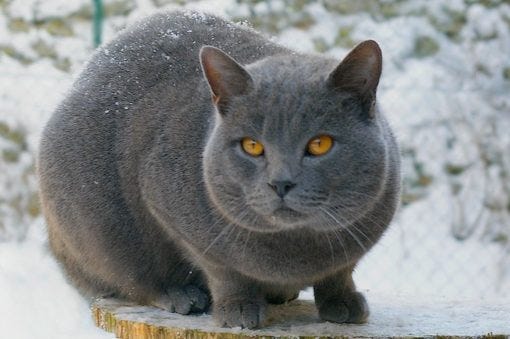
The chartreux is often described as a “toothpick potato” due to its stocky body and spindly legs. their blue-gray fur is dense and water repellent. they are muscular and energetic, living up to their reputation in French literature as good mouse catchers.
They are born hunters, but also good-natured, loyal, and easy-going. This cat is playful, fun-loving, and may enjoy a game of fetch. they have even been known to become familiar with their name and respond when called upon.
The Chartreux is said to have been bred by monks at the order’s main monastery, Grande Chartreuse, in the French Alps. these cats were supposedly trained to have low voices so as not to interrupt meditation (however, this has not been verified).
nebelung
The Nebelung is often compared to the Russian Blue with its dense blue-gray fur and bright green eyes; However, the Nebelung’s coat is semi-long and accented by silver-tipped guard hairs. they are just as sleek and muscular as their shorter-haired counterparts.
they are mild-tempered, soft-spoken, affectionate, and playful cats. this cat is a devoted and loyal companion, but will not interfere with all aspects of his family’s life. they are shy around strangers.
The Nebelung is an American breed of cat, which originated when a black domestic shorthair cat mated with a Russian Blue. the breeder chose the name nebelung, which means “creatures of the mist” in German, because of the breed’s unique appearance.
British shorthair
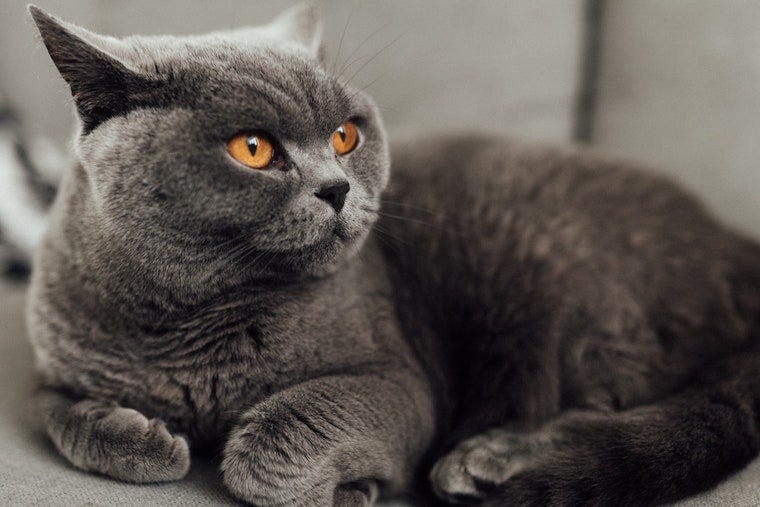
The British Shorthair, once called the British Blue, has a cool, plush coat that is dense and waterproof on a compact, coppery body. they are medium to large in size, with a massive, round head on a short, thick neck. they are sometimes known as the bulldog of the feline world. The British Shorthair is best known for being bluish-gray in color, but can be bred in other shades.
Although calm and initially hesitant, this cat will approach people once they become familiar with them and bond with members of the human family. they are particularly good with children, showing patience, affection, and easy adaptation to changes in the home.
The British shorthair is considered the first official showcat. Until the late 19th century, they were just your average domestic cat, commonly called a moggy in Britain. Over time, the shorthair came to be considered more than just a working cat and, per petmd, began to be welcomed into the home to “share the warmth of home with the family proper.”
Persian Blue
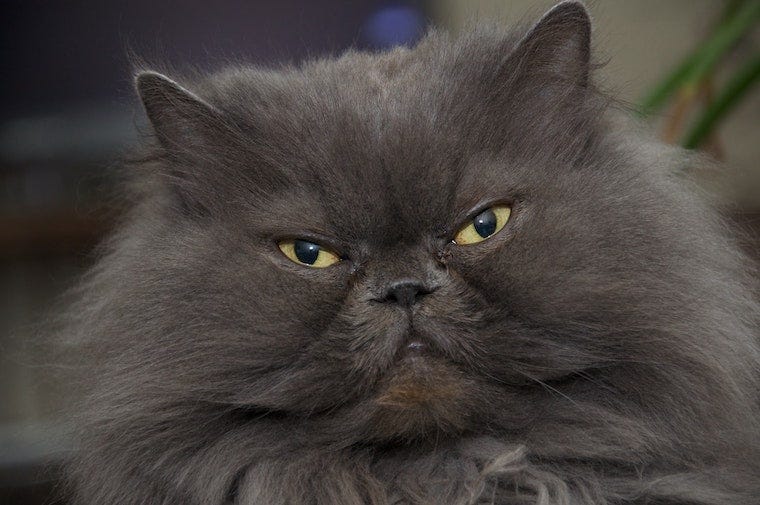
While Persian cats are often famous for their silky white fur, they come in a variety of other colors, including Persian Blue, a perfectly handsome gray kitty. This very ancient breed is believed to have originated from Turkish Angora cats crossed with other longhaired cats from Persia, Afghanistan, Burma, China, and Russia. the Persian won over an Italian nobleman in the 17th century. He brought them to Europe where they became a favorite of Queen Victoria.
Persians have been called “fur furniture” because of their long periods of inactivity. these cats have a sweet and gentle nature and prefer a quiet environment. while they are happy to be petted and petted, they are generally not interested in playing or chasing toys. however, as with any pet, it is important to try to engage your Persian dog in some play exercise every day.
scottish fold
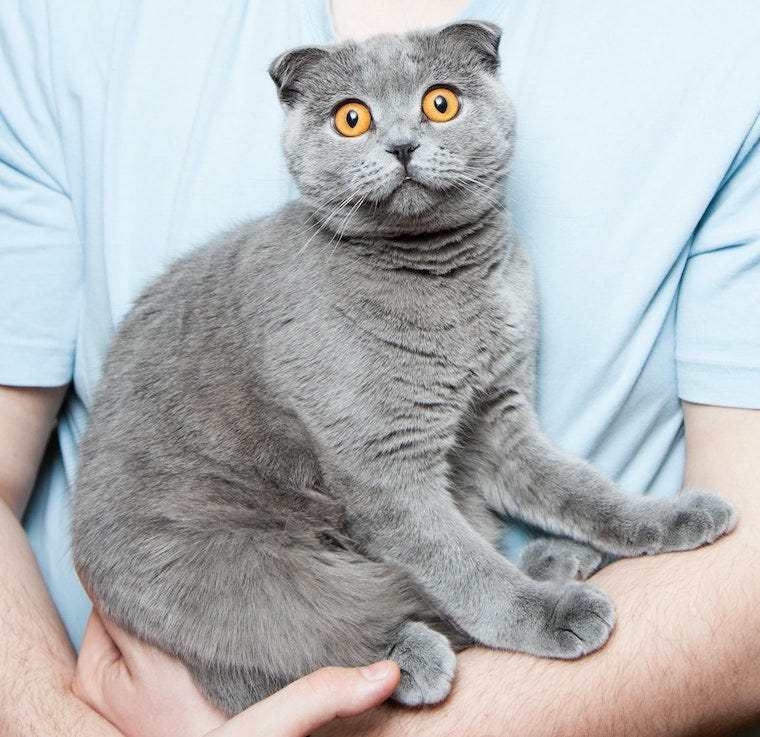
Scottish folds have a plush, dense coat that can be short or long and is often grey. These sweet and calm cats have a stocky body covered with padding. Scottish folds are one of the most popular breeds in America and Europe. they are usually happy with a sweet disposition. the scottish fold is known to sit like a human, affectionately coined “the seated buddha”.
all scottish fold cats alive today can trace their ancestry back to a barn cat named susie. In Scotland in 1961, a shepherd named William Ross found Susie, a long-haired white female with distinct folded ears. Susie was bred with several other breeds such as Persians, American Shorthairs, and Exotic Shorthairs to achieve the sweet, round look of today’s Scottish folds.
fun fact: all scottish fold kittens are born with straight ears; 18 to 24 days after birth, their ears will be folded in about 50% of the litter.
sphynx
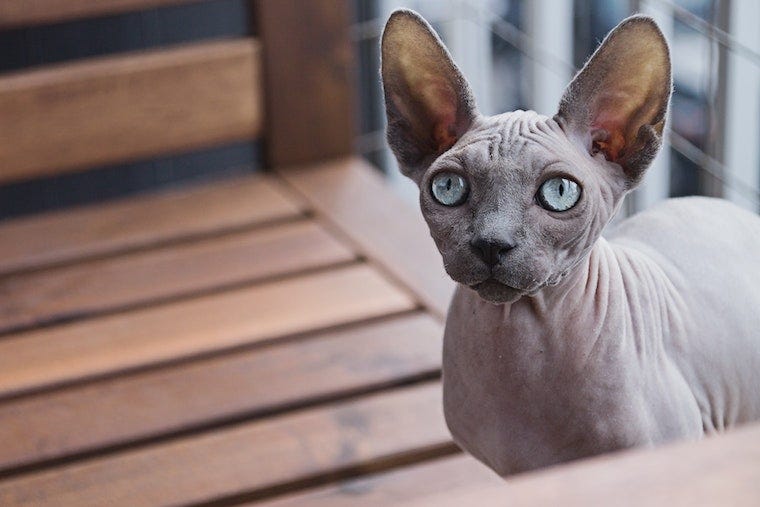
The popular sphynx cat is normally hairless, but may have fine fuzz on its body. many sphynx will have gray fur or gray down, and will still require regular bathing. If hairless cats like the Sphynx are not cleaned or sponge bathed weekly, they can feel sticky to the touch and develop skin problems.
how did this breed get its name? In 1966, Ontario, Canada, a black and white cat gave birth to a wrinkled, hairless kitten. the owner named this kitten a prune, which was eventually crossed with other cats in an attempt to create more hairless kittens. hairlessness is a recessive gene, so some kittens were born with hair and others were not. the first kittens were called Canadian Hairless cats. people began to refer to them as sphinx cats because of their resemblance to the ancient Egyptian cat sculpture, the sphinx. And despite its stoic appearance, the Sphynx cat is known for its highly social, attention-loving, and inquisitive personality.
domestic shorthair
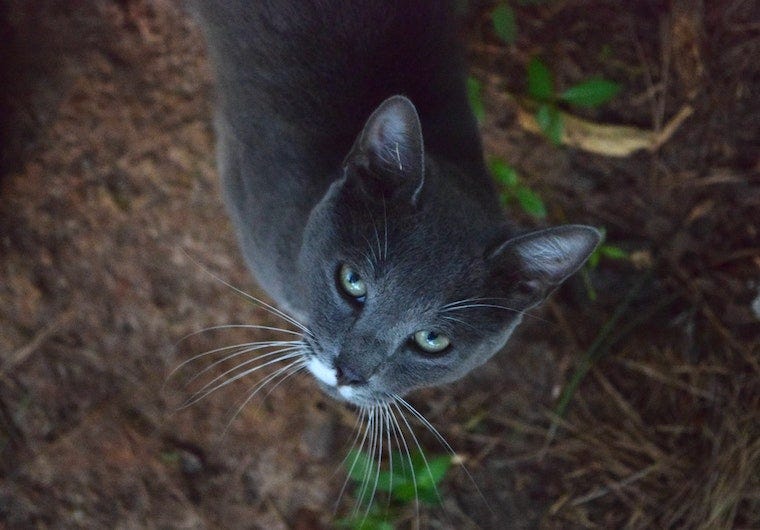
Domestic shorthair cats, also known as moggy cats, strays, or mixed-breed cats, refer to any non-pedigree shorthair cat. Domestic shorthair cats are the most common cats in the United States, accounting for about 90-95% of their number. They come in any size, shape, coat pattern, or color—including gray!
for example, a domestic shorthair cat might be solid gray, a gray tabby (striped, spotted, and swirled), a gray point, or tuxedo gray (bicolor).
other breeds of gray cats
grey commonly occurs in a plethora of other cat breeds, including the following:
- oriental short hair
- Norwegian Forest Cat
- Balinese
- Egyptian Mau
- Siamese
- snowshoes
- devon rex
- siberian
- American short hair
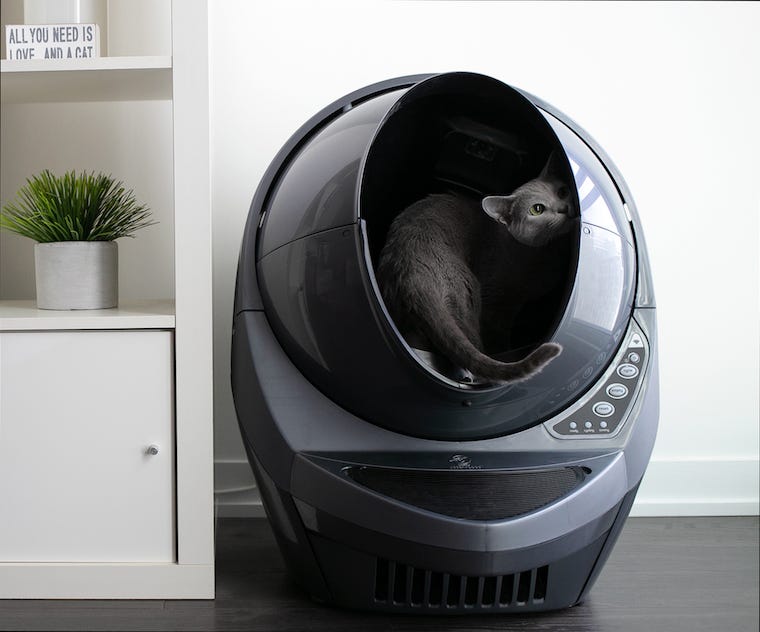
what’s cooler than adopting a kitten from one of these gray cat breeds? watching that kitty use the self-cleaning robot – available in grey, naturally! the art of camouflage has never looked so clean.
Whether or not you have a preference among gray cat breeds, we can all appreciate the beauty and unique spirit they bring to the feline world.